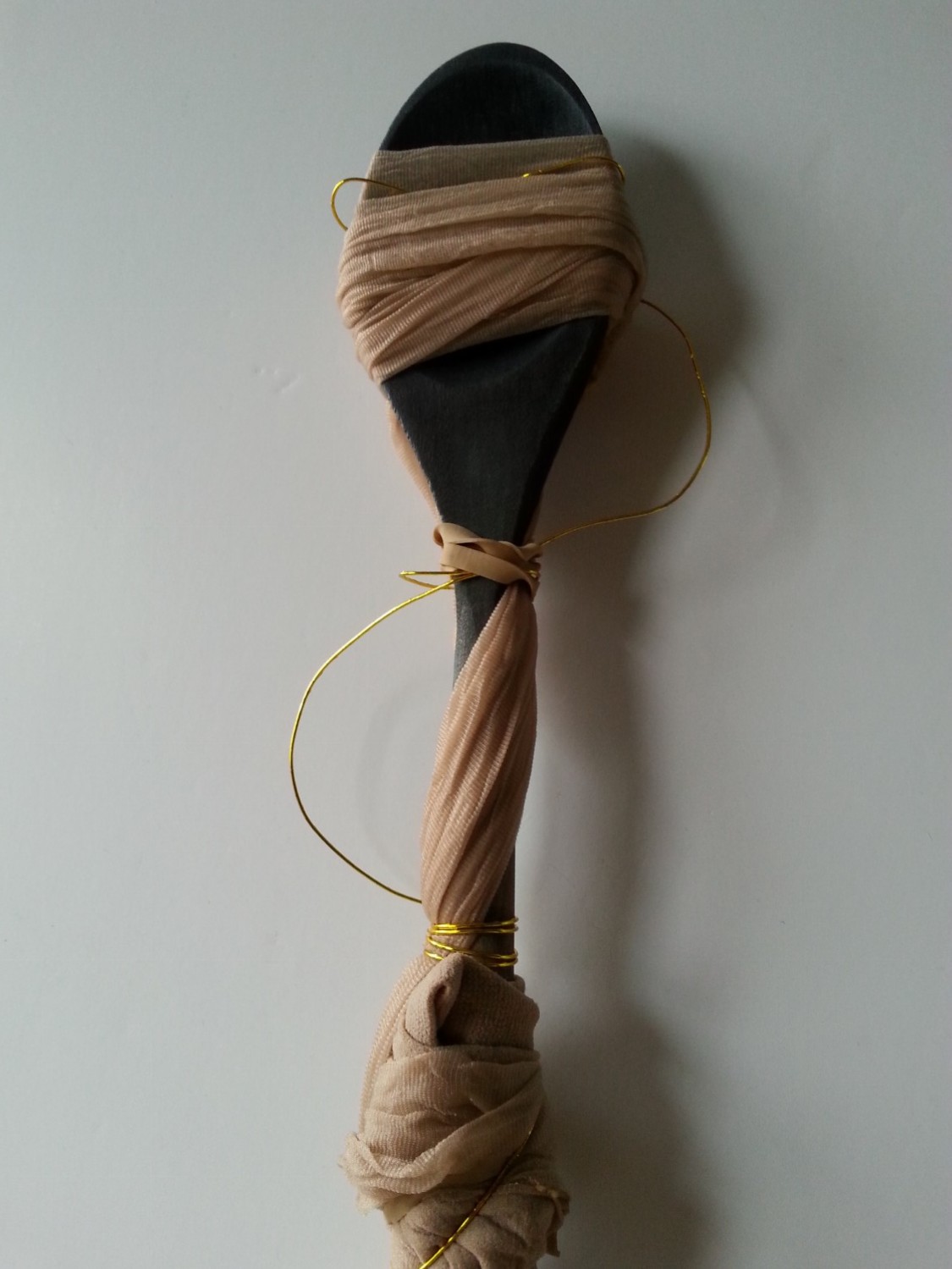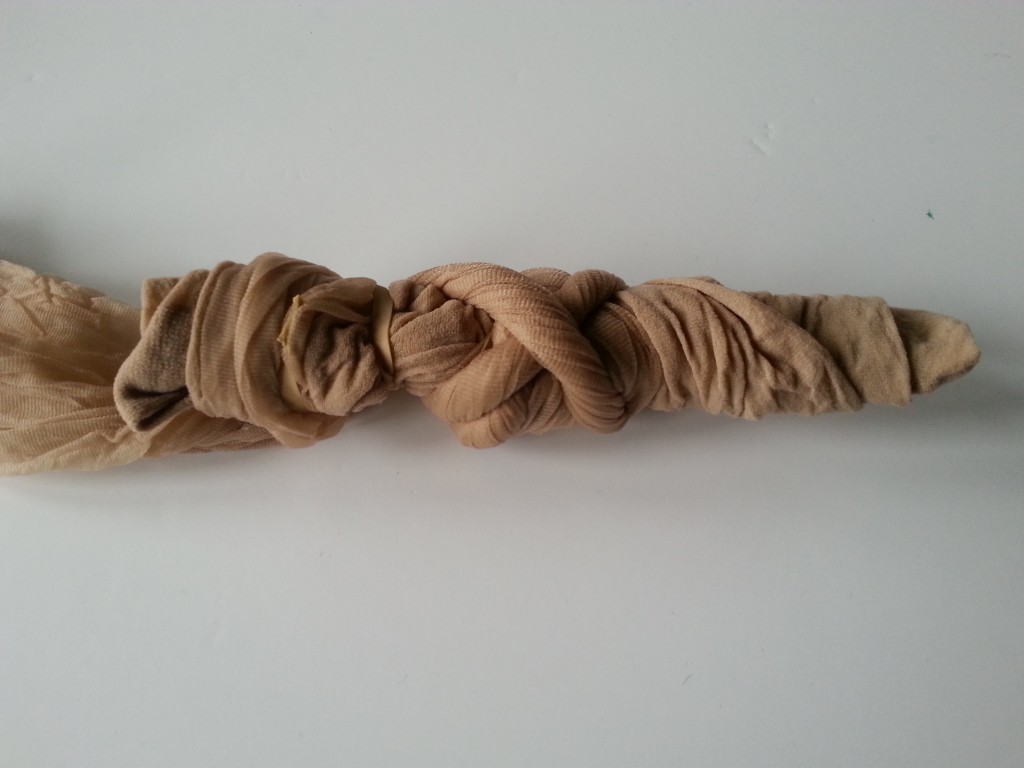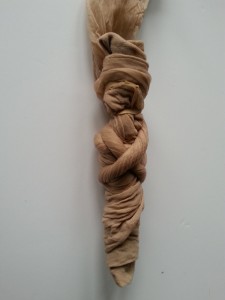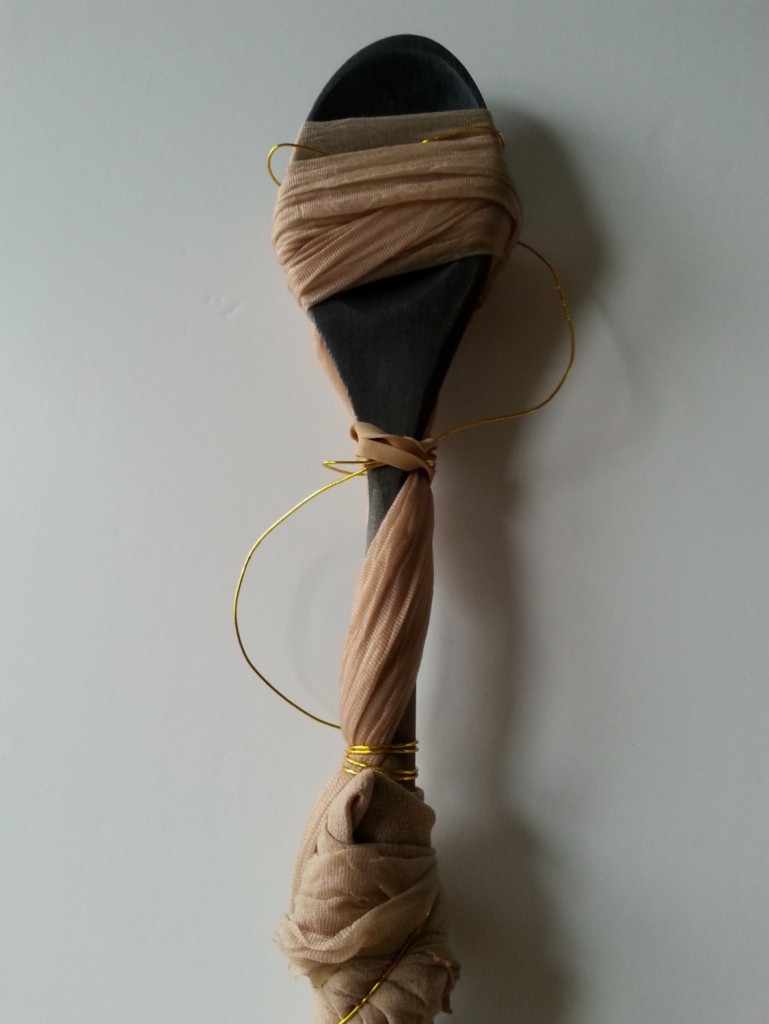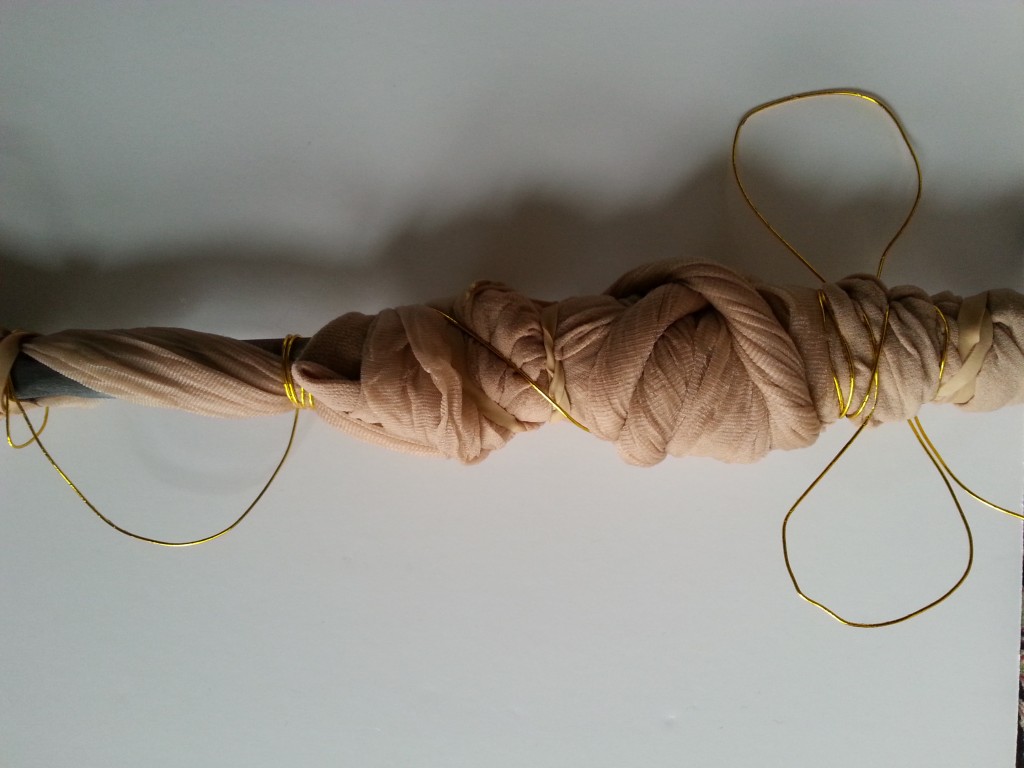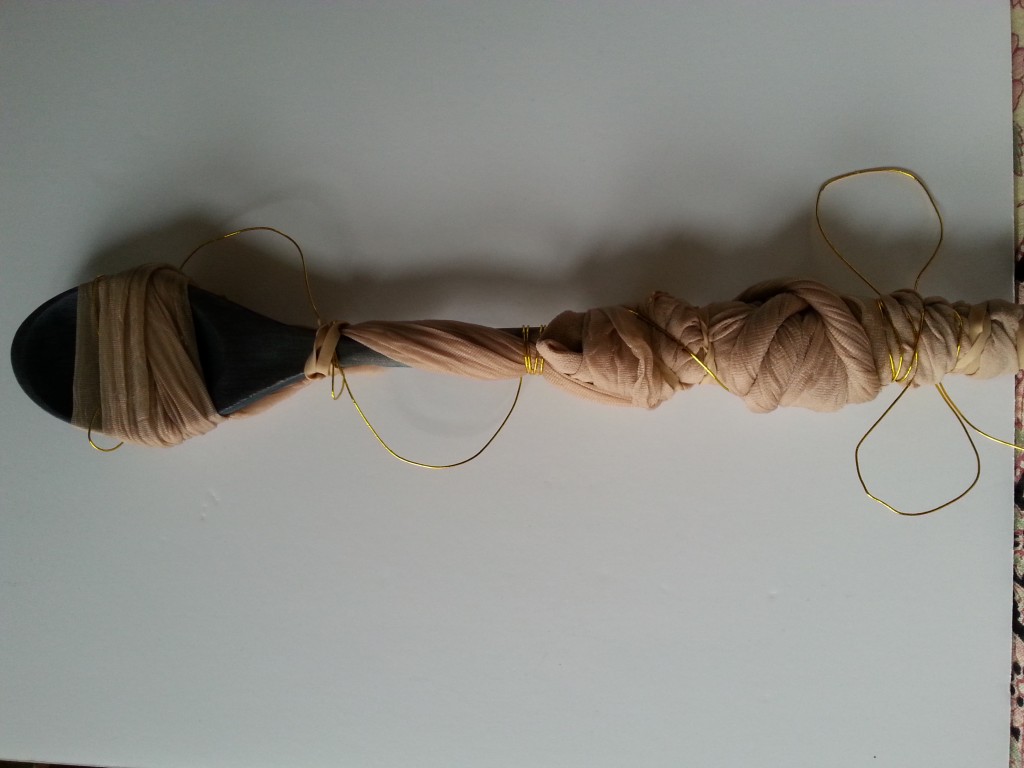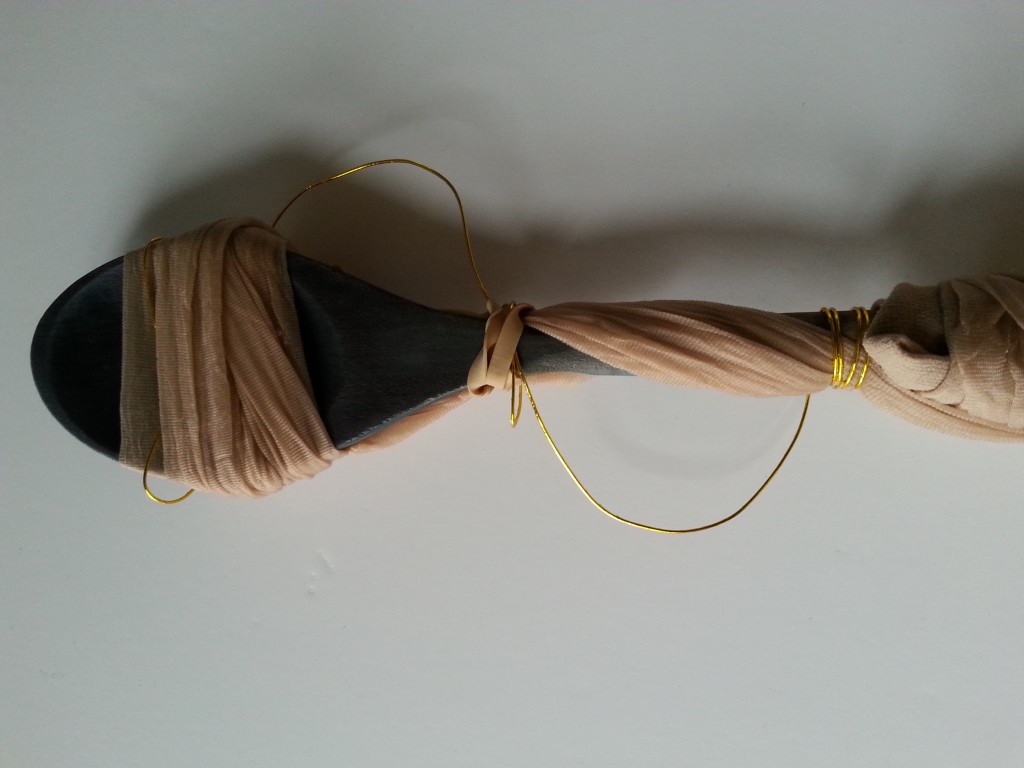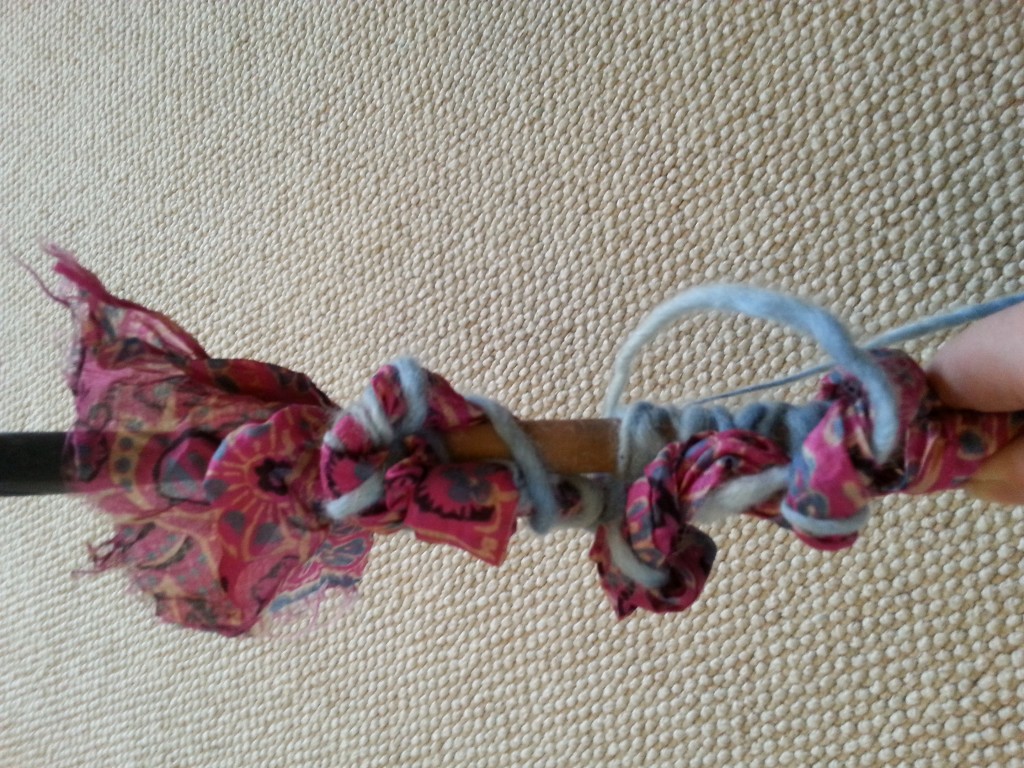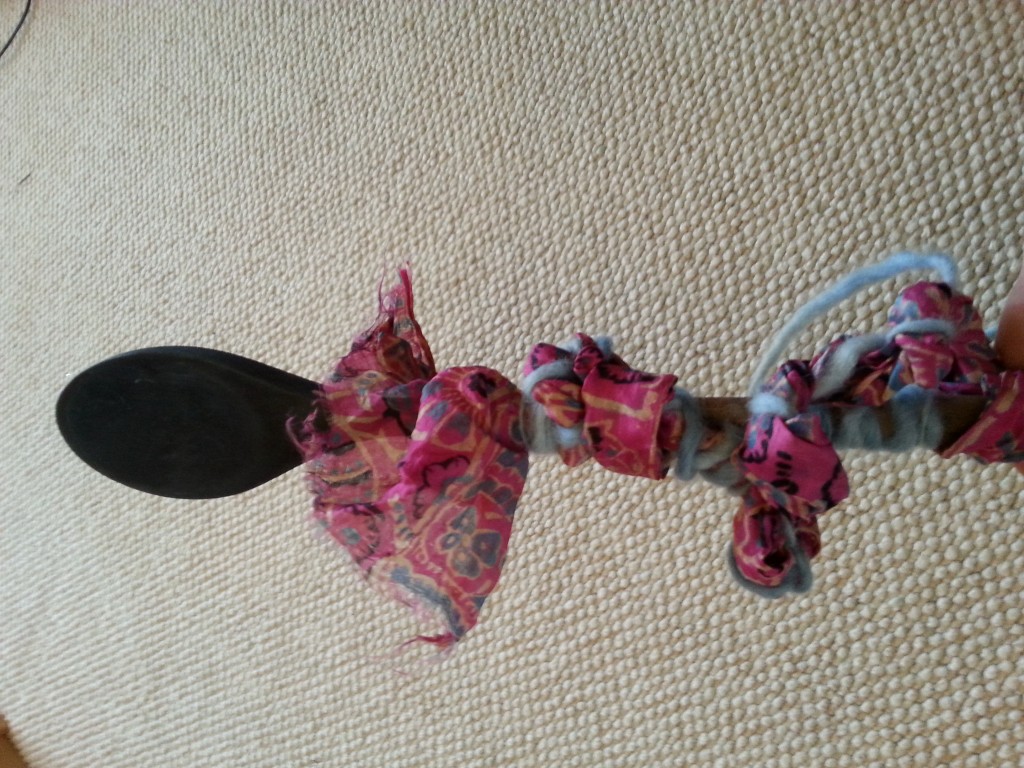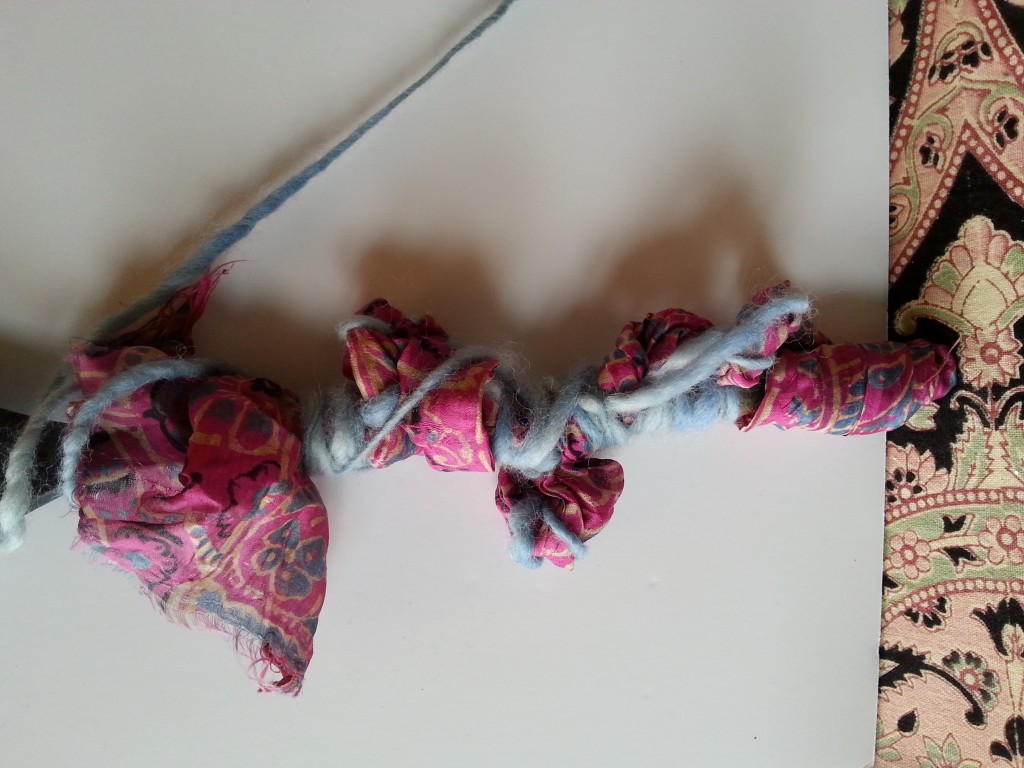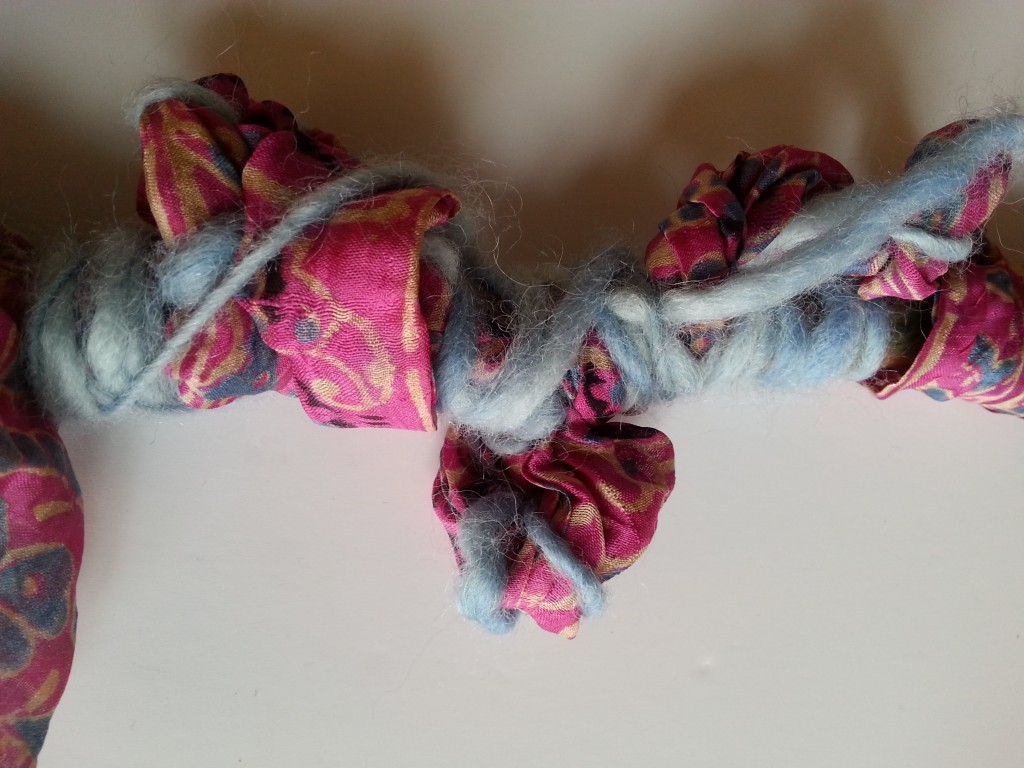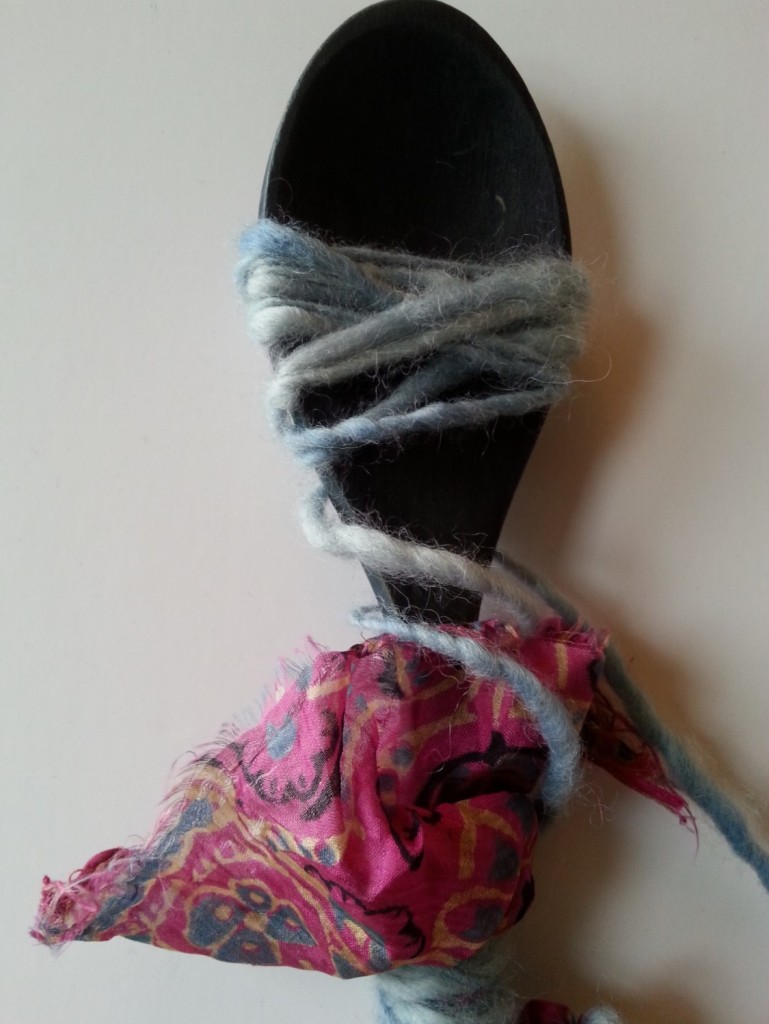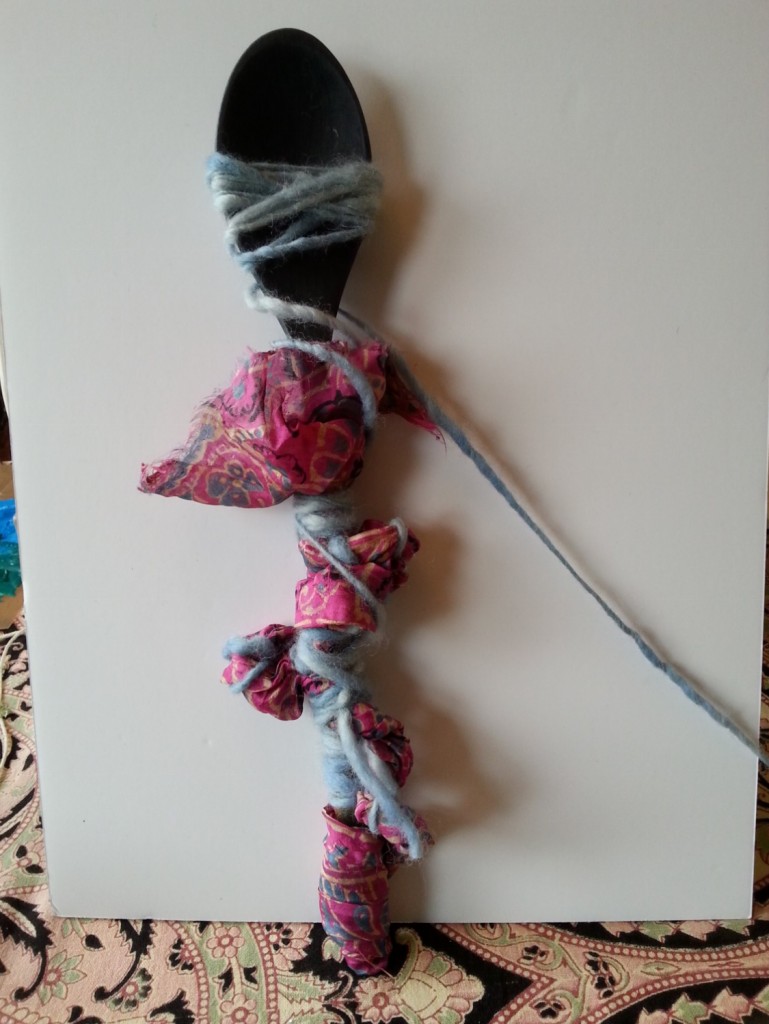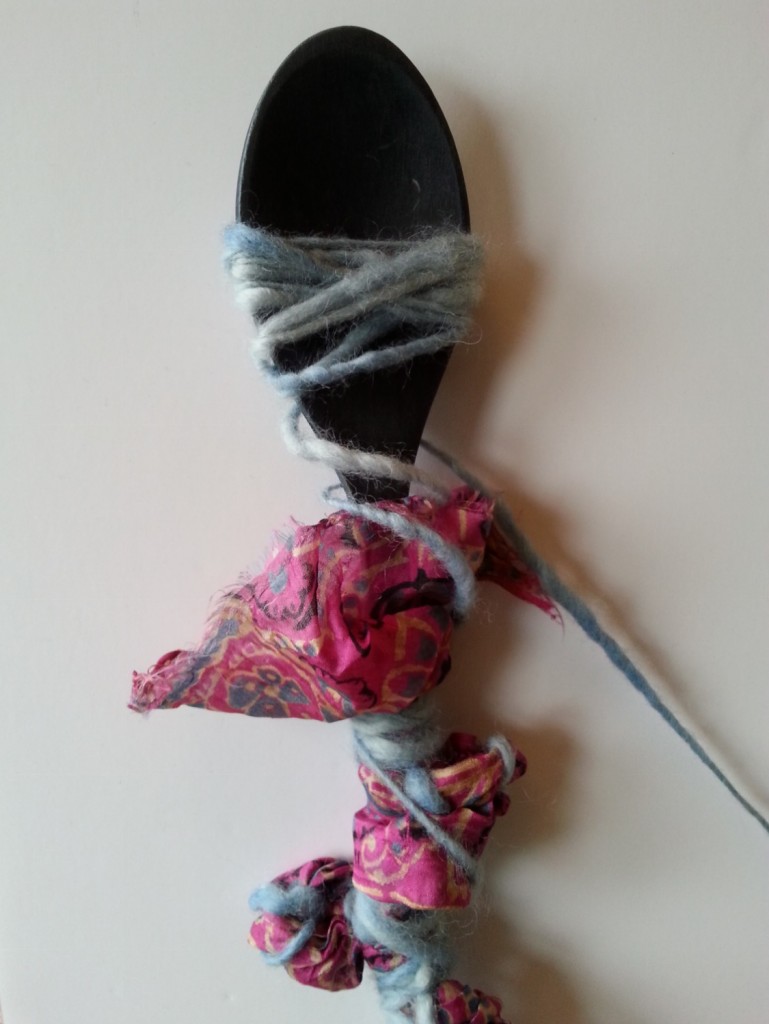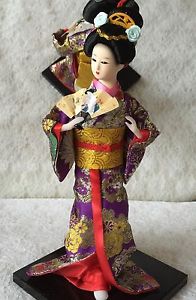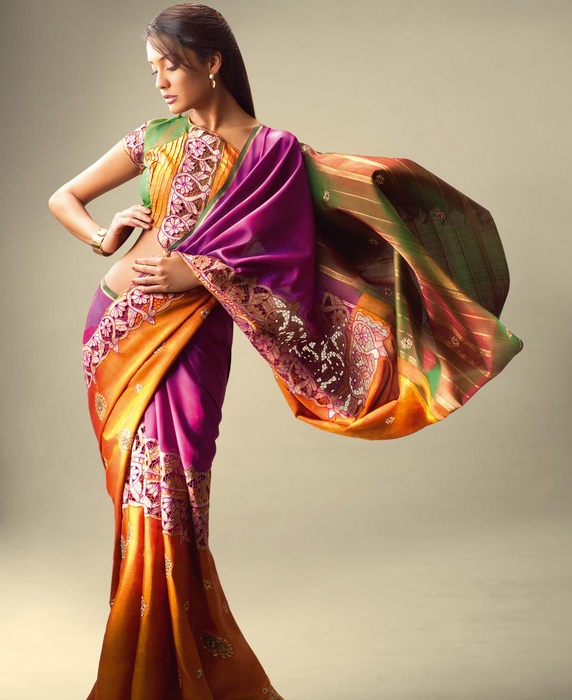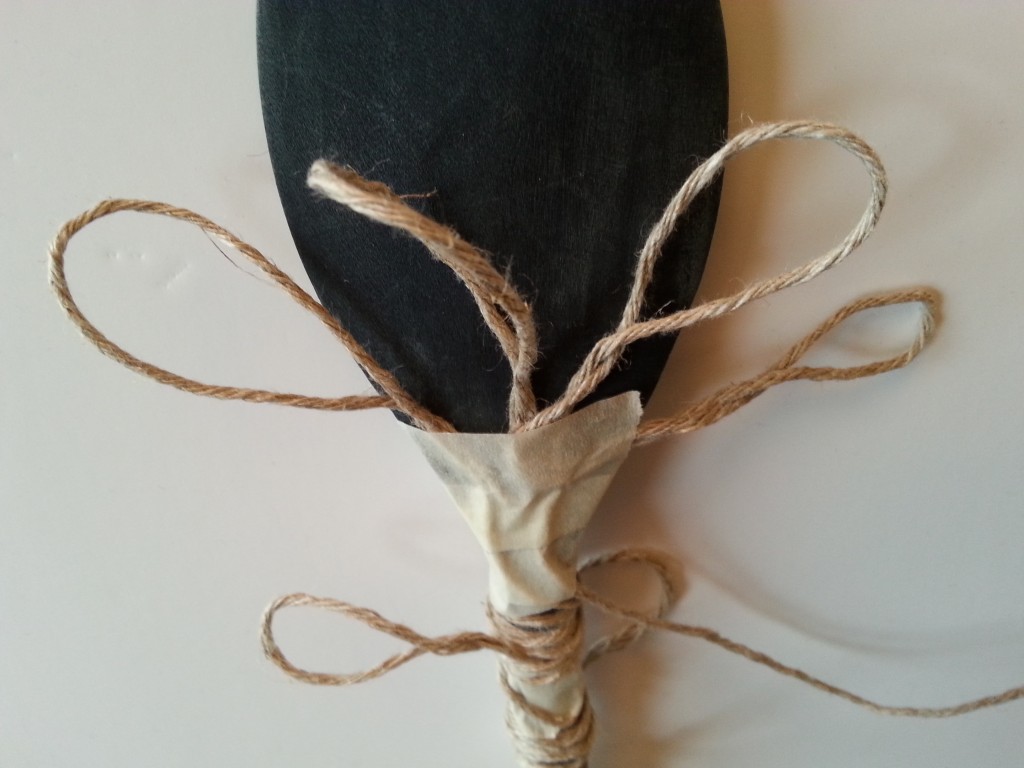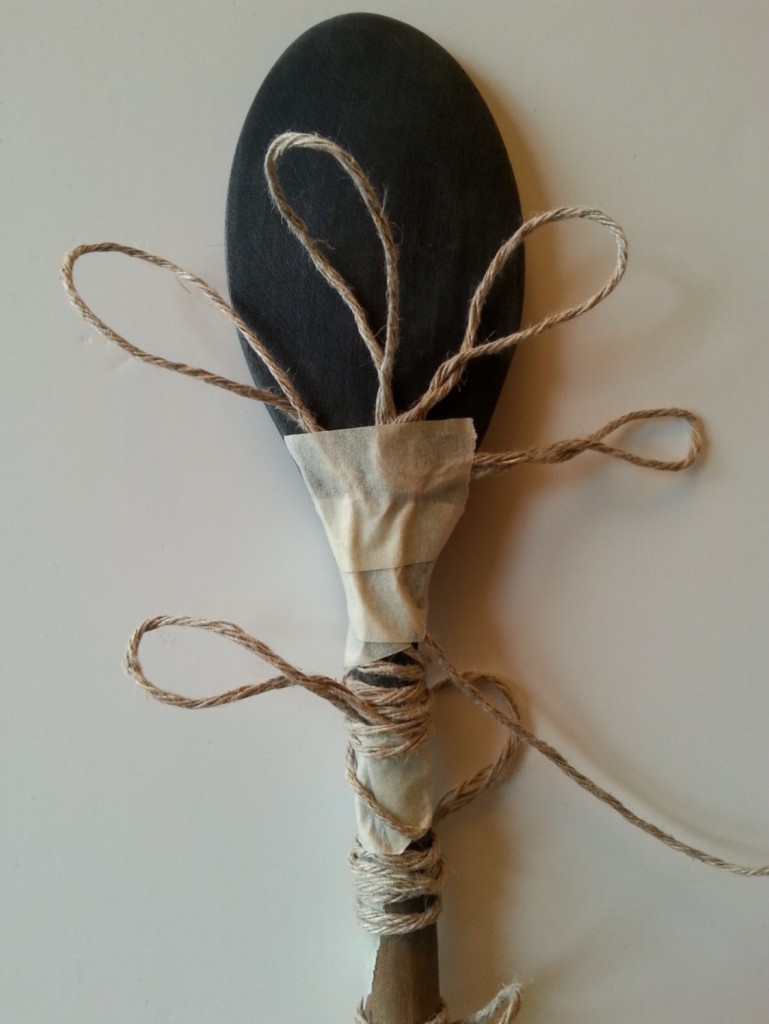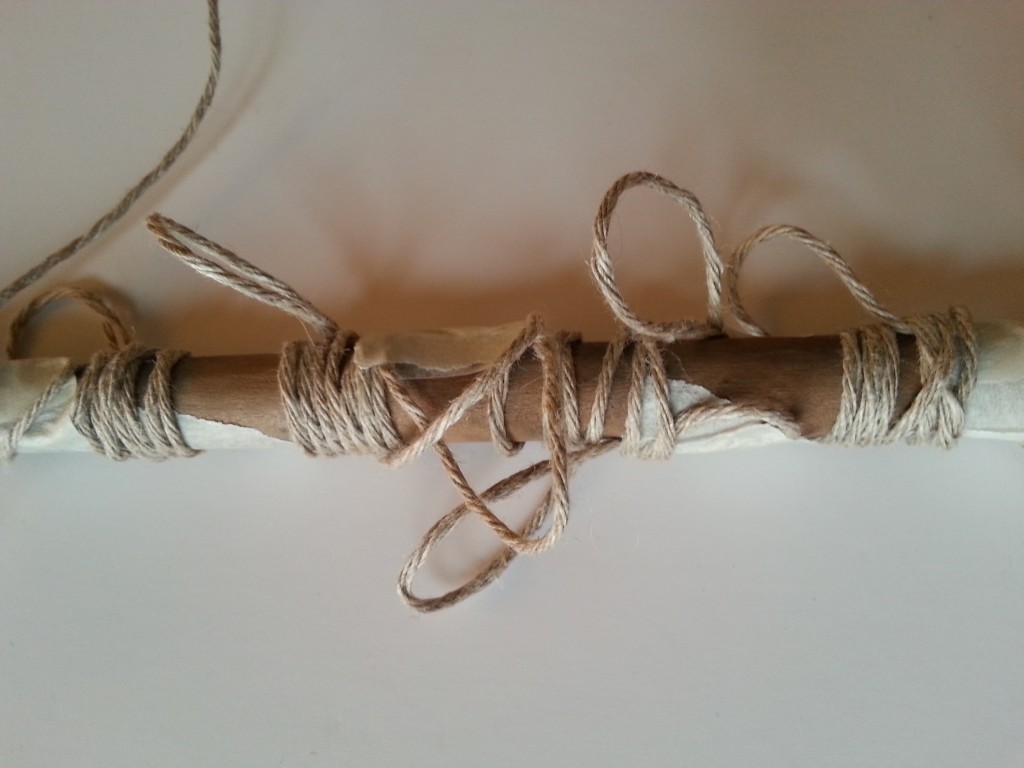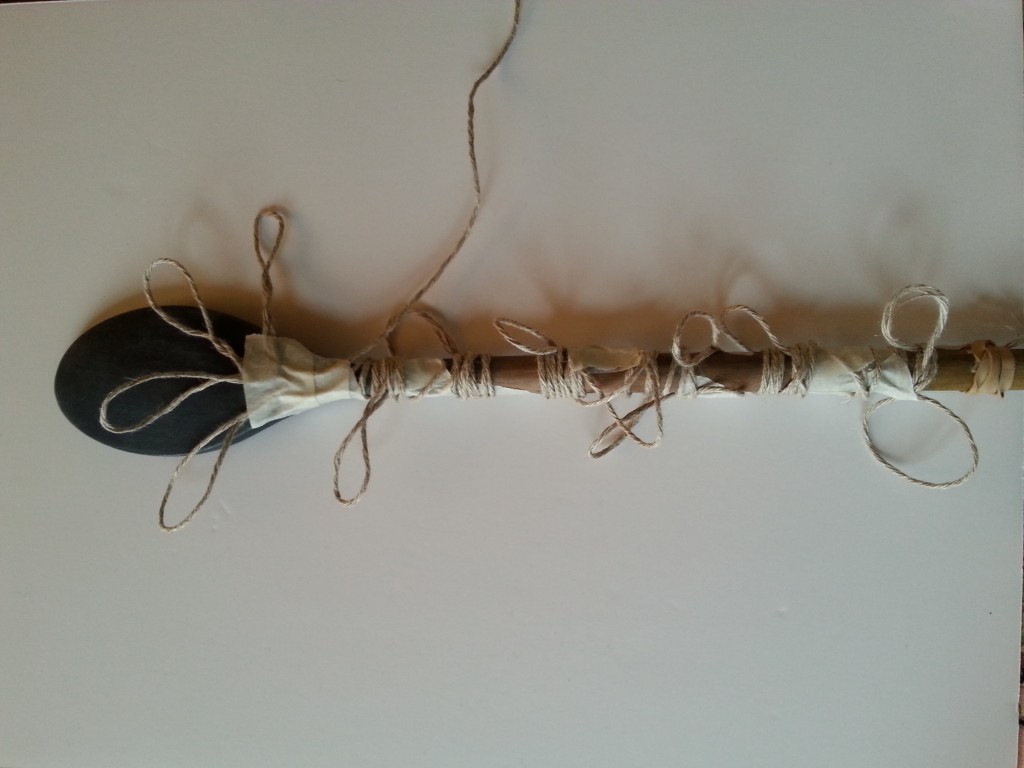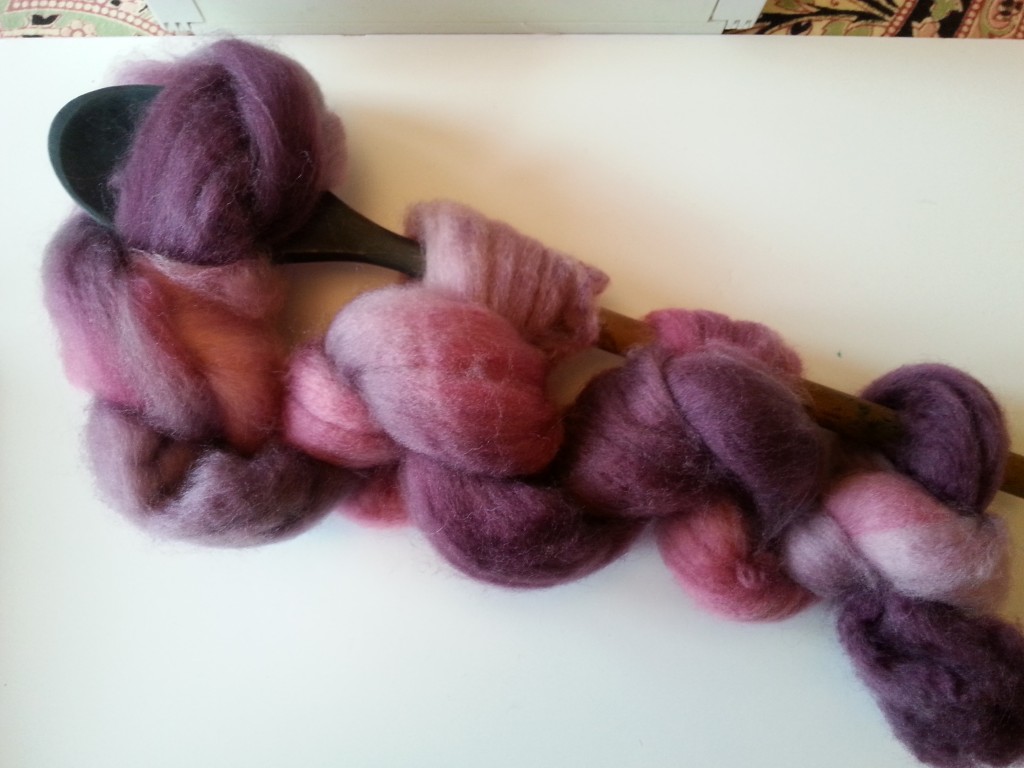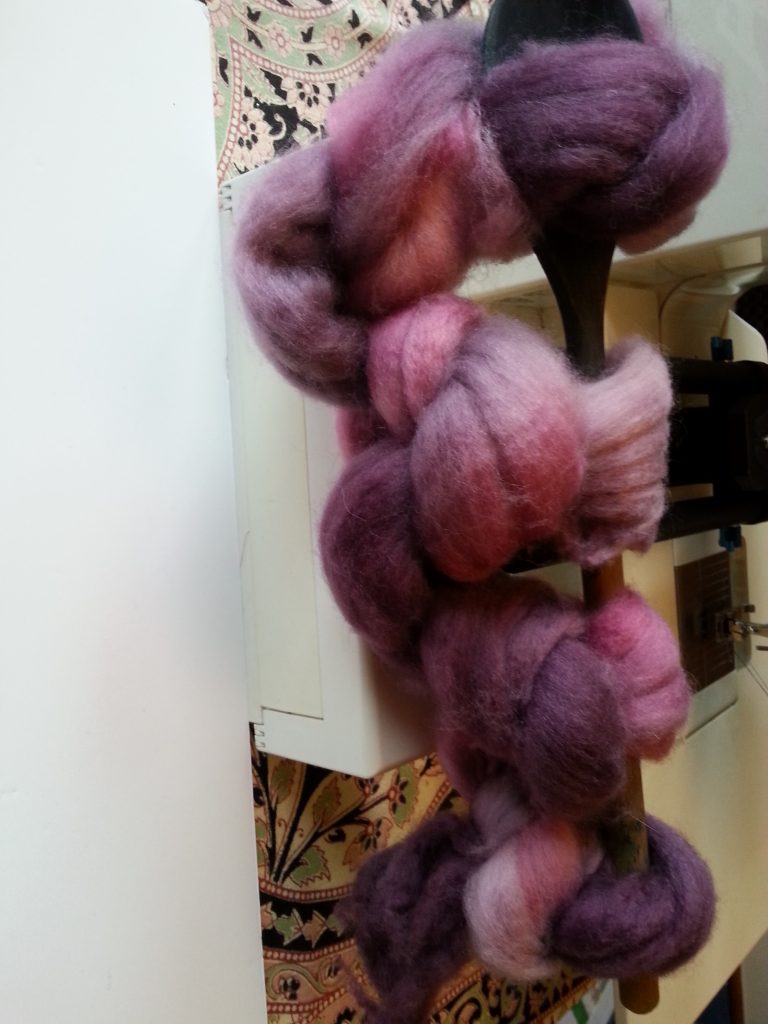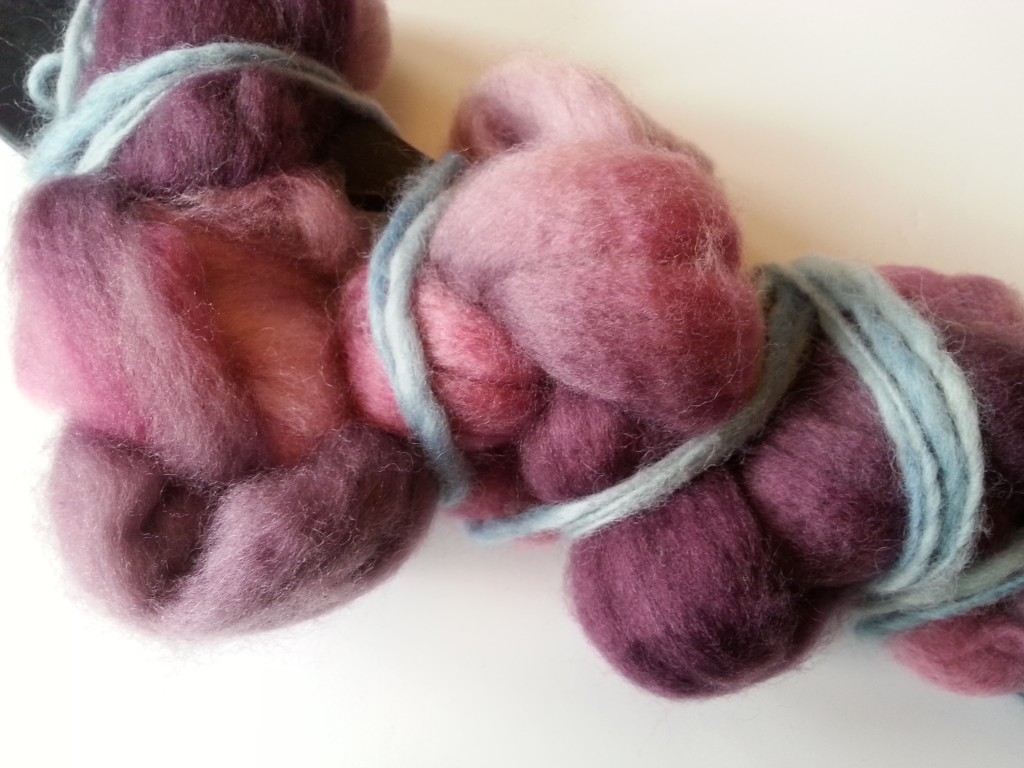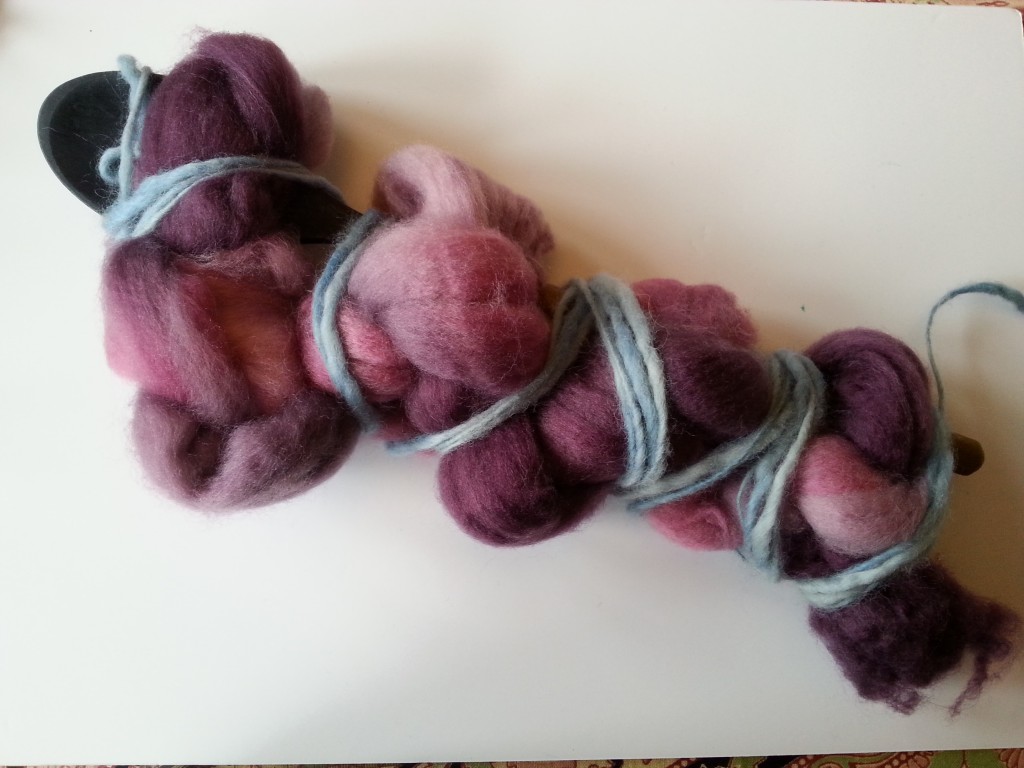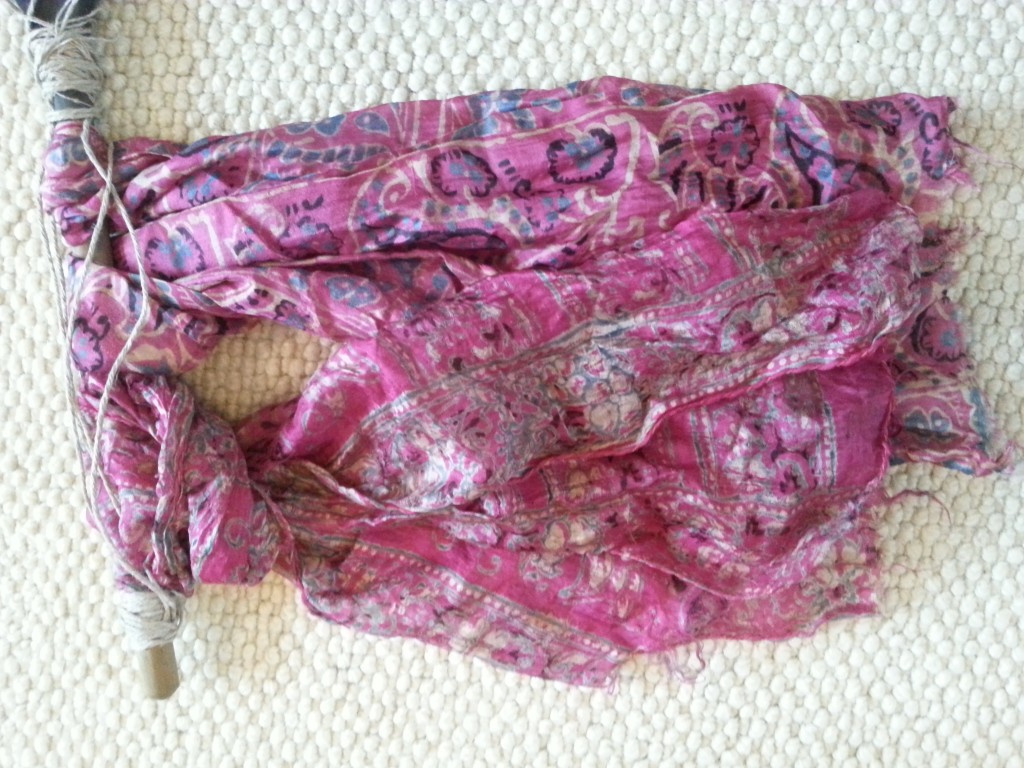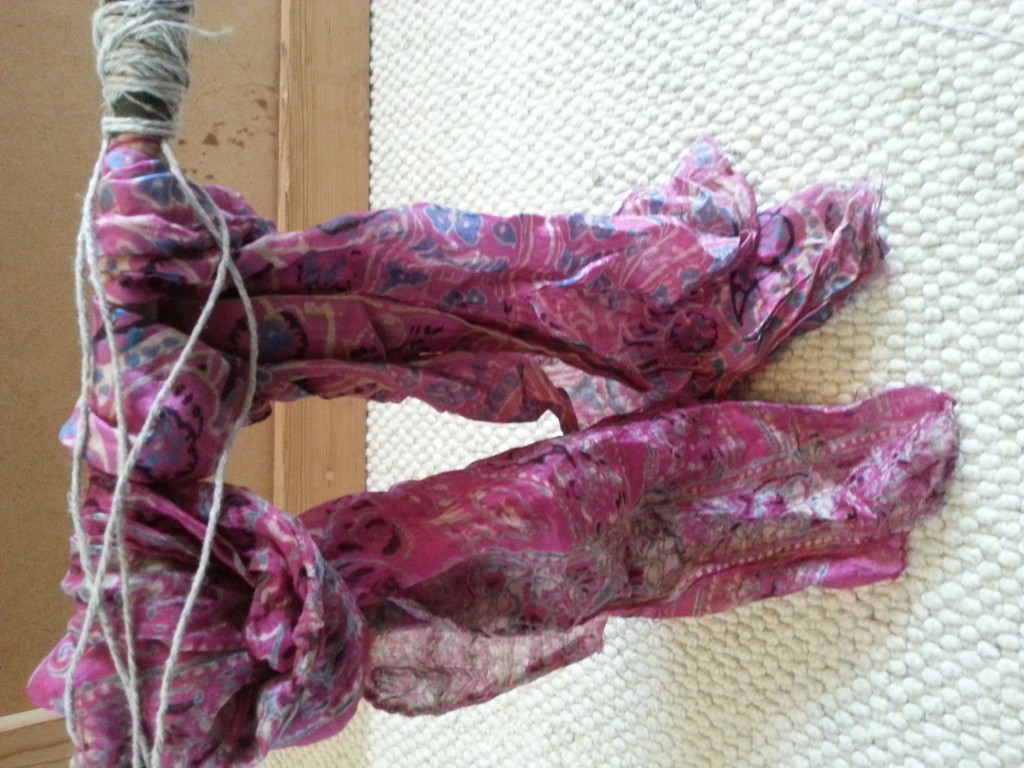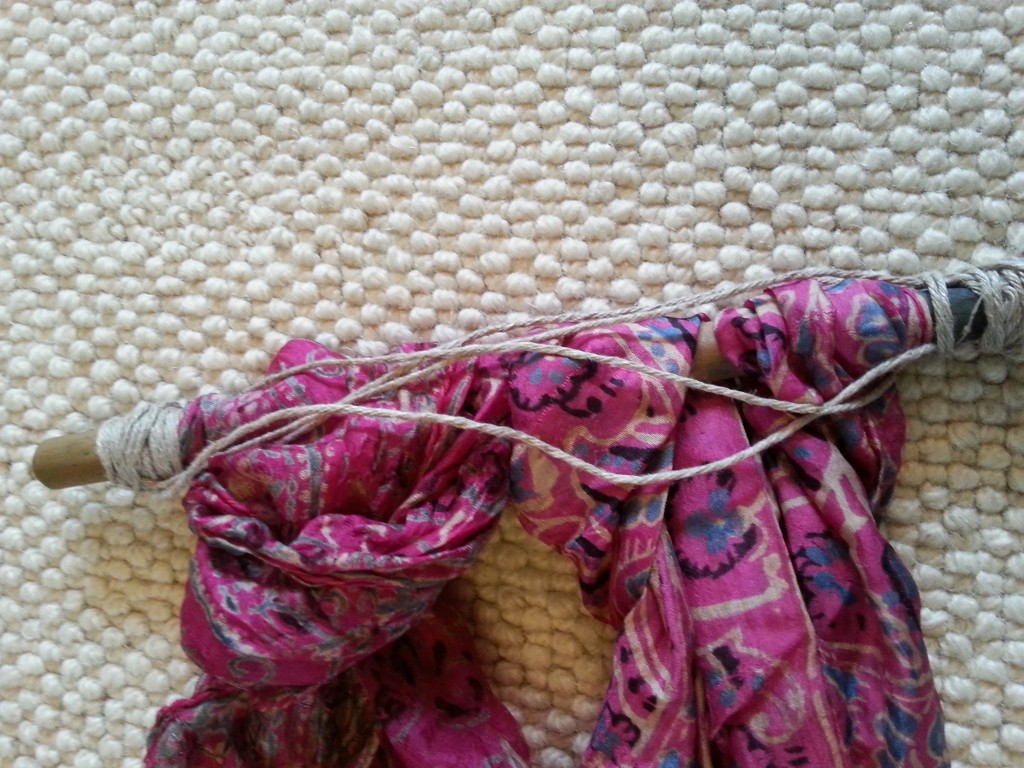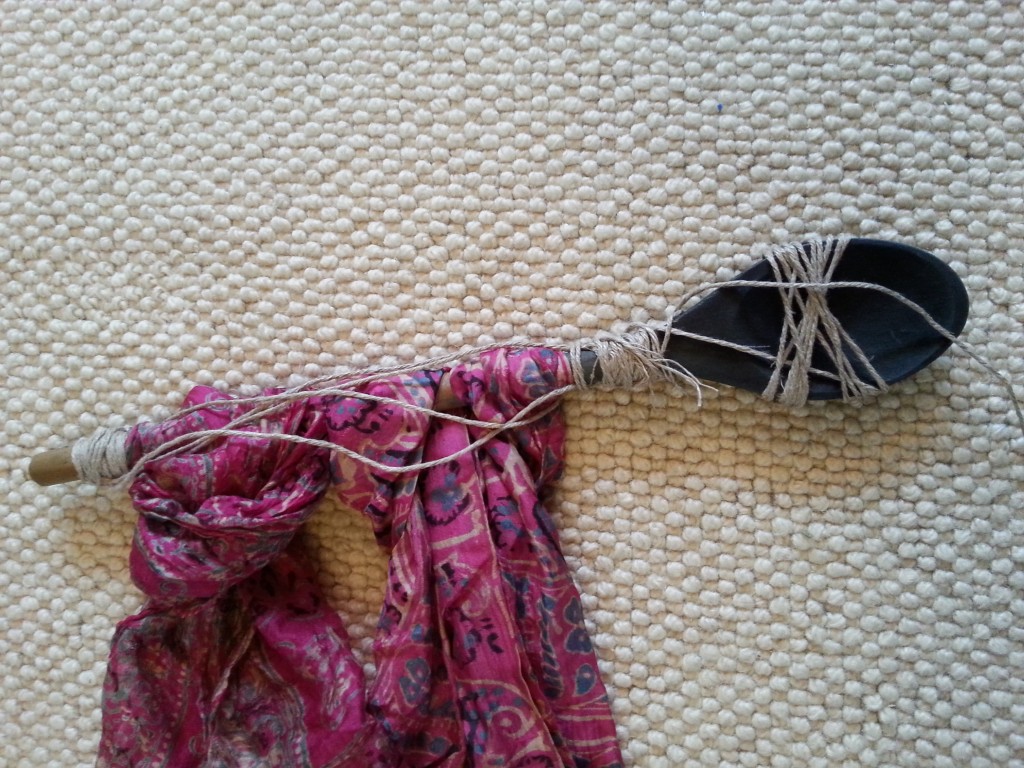For this series of samples we are asked to wrap our chosen object (a wooden spoon in my case) with a range of mixed threads, playing with tension, loops and spacing of the wrapping. I chose the following materials and techniques to explore:
Nylon tights and jewellery wire
This was part way through the initial wrapping and I photographed it because it reminded me of a mummified child, arms wrapped close around its chest. What was fascinating was that when I rotated the image, it didn’t have the same immediate connotations for me at all.
This is a very interesting subject to consider in terms of the way we interpret images. The fact that simply rotating the same piece can radically change how we see it is definitely something I would like to explore – preconceptions, how visual experience (wrapped mummies in museums are generally seen horizontally) affects how we evaluate objects, how light and shadow change the way objects appear. Below is the same image rotated and viewed vertically.
I finished this sample by wrapping the piece in jewellery wire, taking advantage of the rigidity and flexibility to take the wrapping outside the body of the piece.
- Nylon tights and wire
- Nylon tights and wire
- Nylon tights and wire
- Nylon tights and wire
This piece has a tribal, African feel to me, it reminds me of the very straight, distinctive posture of the Masai dancers in the Adumu dance competition, wrapped in cloth robes and wearing beautiful, striking jewellery.
Silk fabric and wool yarn
- Silk and wool yarn
- Silk and wool yarn
- Silk and wool yarn
- Silk and wool yarn
There is a strong contrast in this sample between the aged wood, the soft, fluffy wool and the bright, bold silk fabric. By bunching the fabric and creating loops in the yarn this enhanced the overall effect.
- Silk and wool yarn
- Silk and wool yarn
- Silk and wool yarn
- Silk and wool yarn
Again, turning these and viewing from a different angle gives the piece an entirely different perspective. Where before I saw interesting shapes, now I see figures in kimono, sari or Nigerian traditional costume.
- Emir of Kano – Northern Nigeria
- Japanese kimono doll
- Traditional Japanese kimono
- Cutwork Saree
Clearly my piece is very naive but recalls the traditional peg dolls we made as children and dressed in fabric scraps from the workbox. My reaction to clothing based around wrapped garments is completely opposed to that of the other wrapped pieces. I find these evocative and stunning whereas the plain wrapped pieces were suffocating, claustrophic and disturbing.
Looped twine
- Looped twine and masking tape
- Looped twine and masking tape
- Looped twine and masking tape
- Looped twine and masking tape
Moving away from figurative imagery, this is a more tactile sample, combining the aged spoon with a rustic, rough twine, held in place by paper masking tape. This has a natural feel, reminiscent of vines, gnarled roots and undergrowth.
Wool roving and yarn
- Wool roving loops
- Wool roving loops
- Wool roving and yarn wraps
- Wool roving and yarn wraps
This sample began by suspending large loops of roving from the spoon. I added to this by wrapping hand-dyed slubby wool yarn around it, varying the direction, tension and number of wraps. This compacted the roving to give interesting bulbous, almost intestinal shapes. I wasn’t particularly inspired by this sample as I didn’t feel there was sufficient contrast between the roving and the yarn and the spoon was simply the method of suspension and not an integral part of the sample.
Silk fabric and twine
- Silk fabric and twine
- Silk fabric and twine
- Silk fabric and twine
- Silk fabric and twine
Here I looped the fabric over the spoon and using the spoon as a suspension. To add contrast in shape, texture and colour I used rough twine to wrap around the spoon and the fabric.
Again, not a very pleasing example in my view. There isn’t much interest in the shapes and it doesn’t look particularly appealing.
